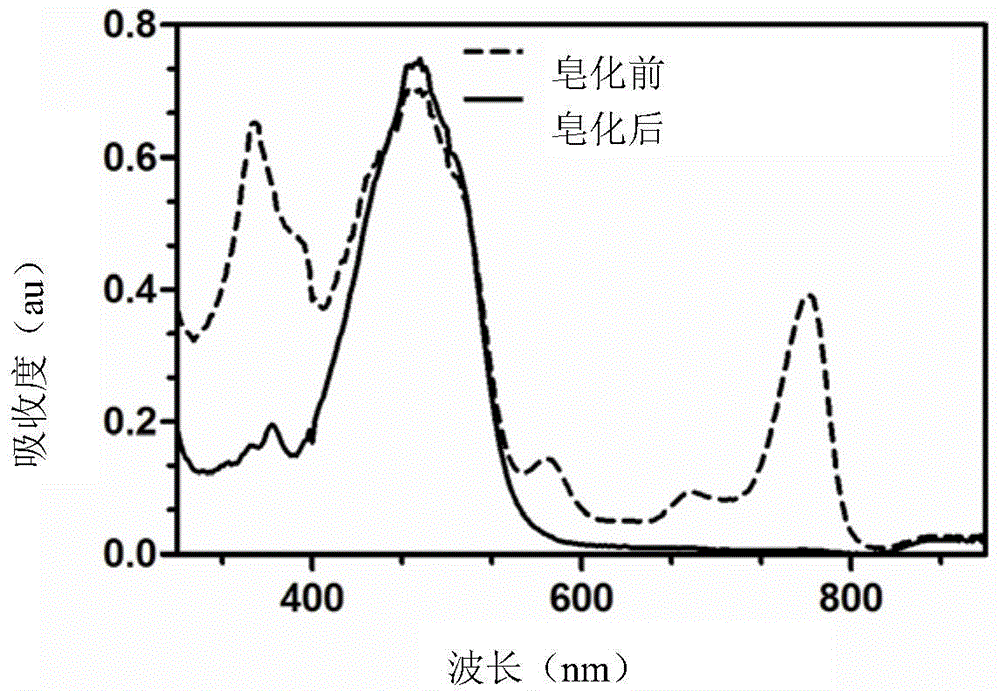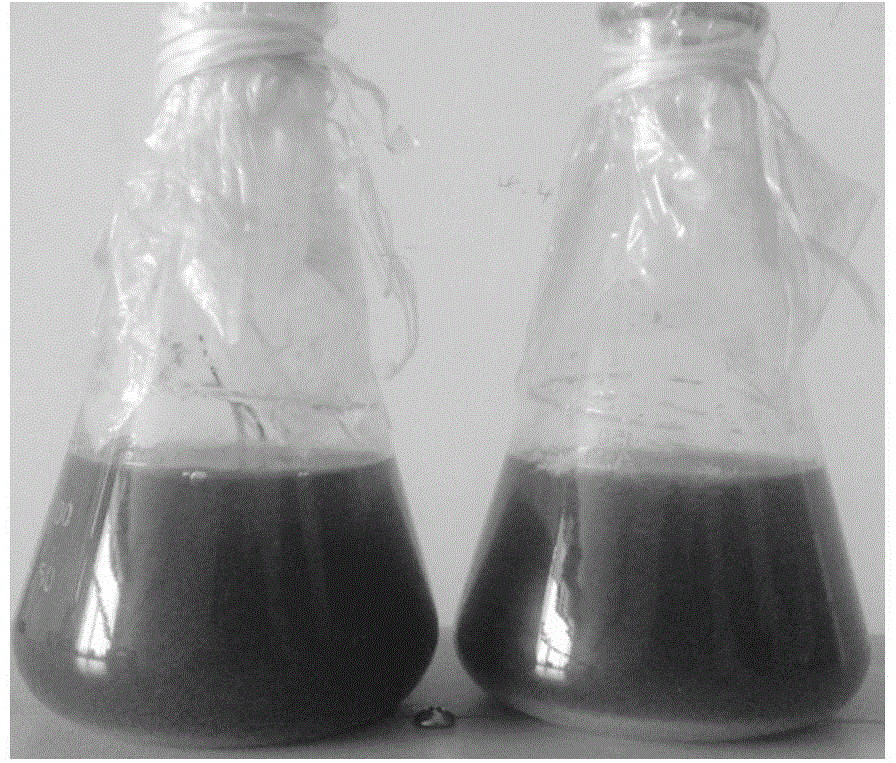Method for quickly producing carotenoid by utilizing microaerobic fermentation of rhodobacter sphaeroides
A technology of photosynthetic bacteria and micro-aerobic fermentation, applied in the field of fermentation, can solve problems such as affecting efficiency and time-consuming, and achieve the effect of short fermentation time and shortening fermentation cycle
- Summary
- Abstract
- Description
- Claims
- Application Information
AI Technical Summary
Problems solved by technology
Method used
Image
Examples
Embodiment 1
[0033] Example 1. Activation of photosynthetic bacteria
[0034] The photosynthetic bacteria (Rb.sphaeroides) stored at -80℃ were streaked and cultured on MMS solid medium, and cultivated at 30℃ for about 4 days to grow a single red colony; then, the single red colony was picked and inoculated with 10-20mL MMS In a 50mL Erlenmeyer flask of liquid culture medium, culture for 18h at 30°C and 200rpm until the photosynthetic bacteria grow to pink.
Embodiment 2
[0035] Example 2. Rapid production of carotenoids by microaerobic fermentation
[0036] With 8% inoculation amount, the photosynthetic bacteria activated in Example 1 were respectively inoculated into two 250 mL conical flasks containing 100 mL MMS medium, and aerobic fermentation was carried out to OD600 at a temperature of 30°C, a rotation speed of 250 rpm, and dark conditions. =0.8, then combine the two bottles of fermentation broth into one bottle so that the volume of the fermentation broth accounts for 80% of the total volume of the Erlenmeyer flask, and then continue micro-aerobic fermentation for 36 hours at a temperature of 30°C, a rotation speed of 150 rpm, and darkness. , Quickly induce a large amount of synthetic carotenoids to ferment, the color of the fermentation broth changes to dark red, such as figure 1 Shown.
[0037] In this example, the conditions for aerobic fermentation are 200-250 rpm and temperature 30-32°C, and the end point OD600 of aerobic fermentation i...
Embodiment 3
[0038] Example 3 Extraction of carotenoids
[0039] The fermentation broth of Example 2 was centrifuged at 10000 rpm and 4°C for 10 min, the supernatant was discarded, rinsed with distilled water once, dried and weighed, and the results showed that the bacterial cell yield exceeded 6 g / L. Compared with the production of carotenoids by the light fermentation method, this method only uses 36 hours of fermentation time, which greatly shortens the fermentation time. At the same time, the carotenoid biosynthesis can be quickly judged by the color of the fermentation broth.
[0040] Then add an appropriate amount of extractant with a volume ratio of acetone to methanol of 7:2 to resuspend the bacteria, and ultrasonically break; the ultrasonic breaking conditions are: power 300W, hit 3s, interval 5s, ice bath, lasting 30min. After crushing, centrifuge at 10000rpm and 4℃ for 10min, collect the supernatant, make up the extractant with the volume ratio of acetone to methanol 7:2 according to...
PUM
 Login to View More
Login to View More Abstract
Description
Claims
Application Information
 Login to View More
Login to View More - R&D
- Intellectual Property
- Life Sciences
- Materials
- Tech Scout
- Unparalleled Data Quality
- Higher Quality Content
- 60% Fewer Hallucinations
Browse by: Latest US Patents, China's latest patents, Technical Efficacy Thesaurus, Application Domain, Technology Topic, Popular Technical Reports.
© 2025 PatSnap. All rights reserved.Legal|Privacy policy|Modern Slavery Act Transparency Statement|Sitemap|About US| Contact US: help@patsnap.com



